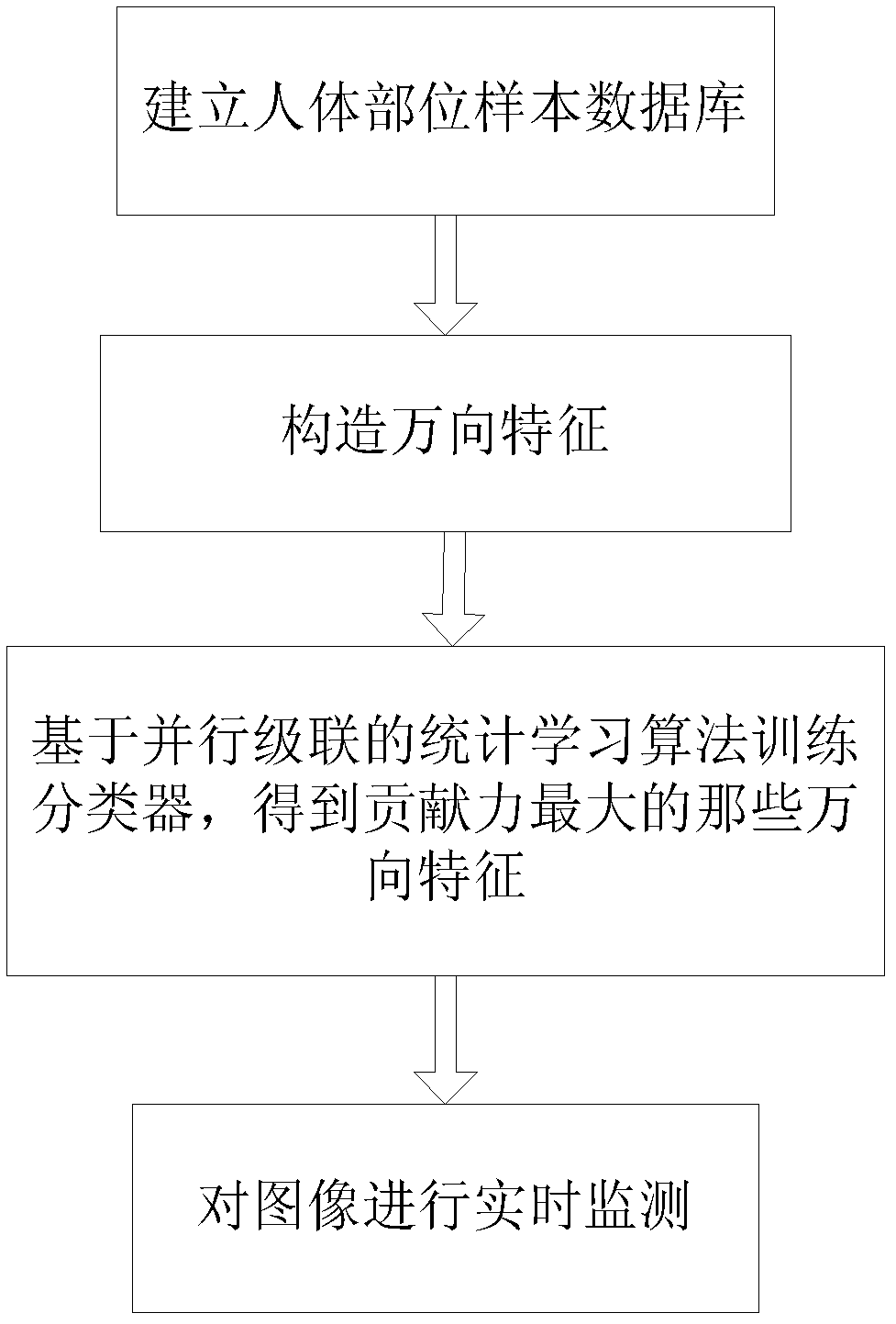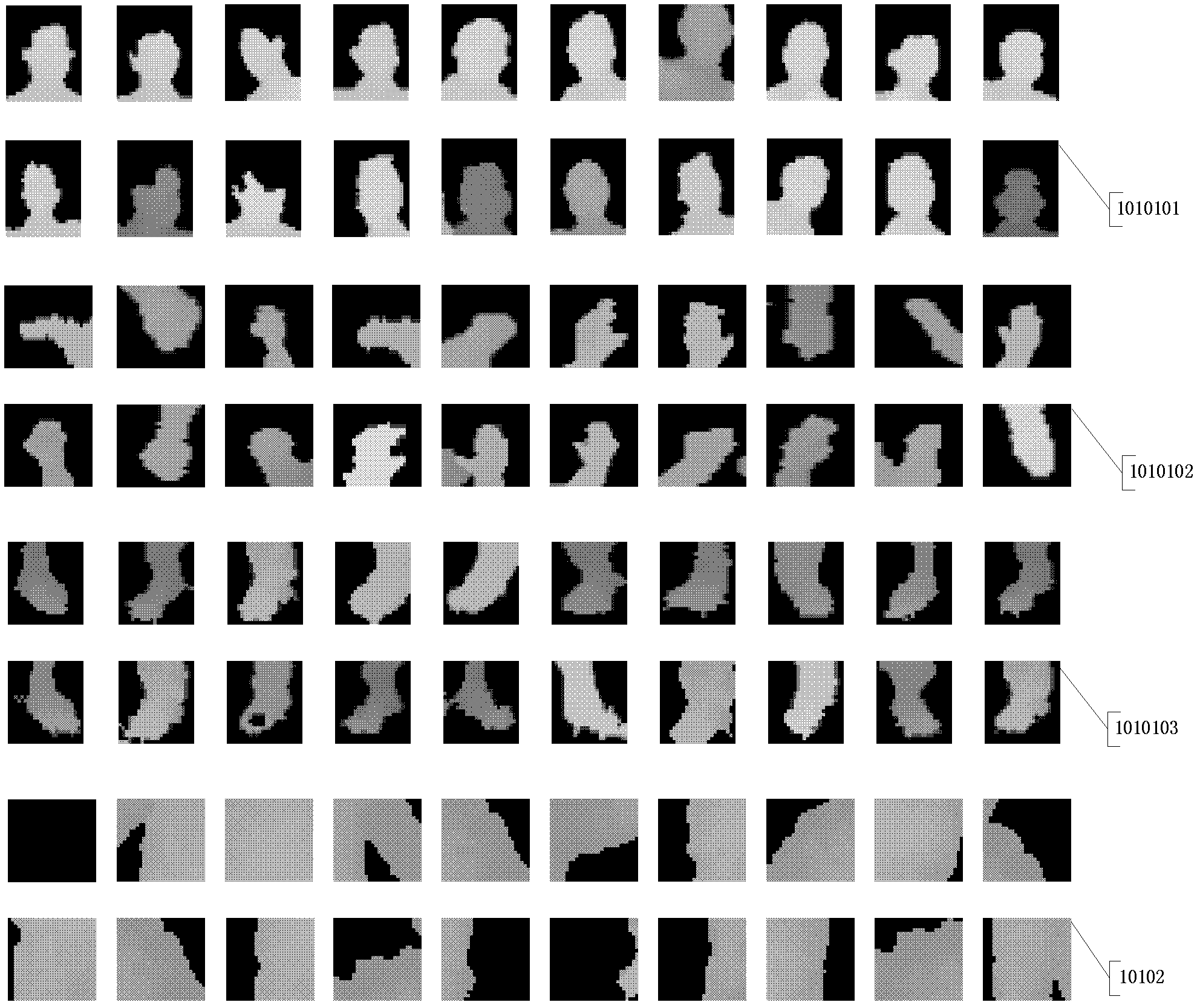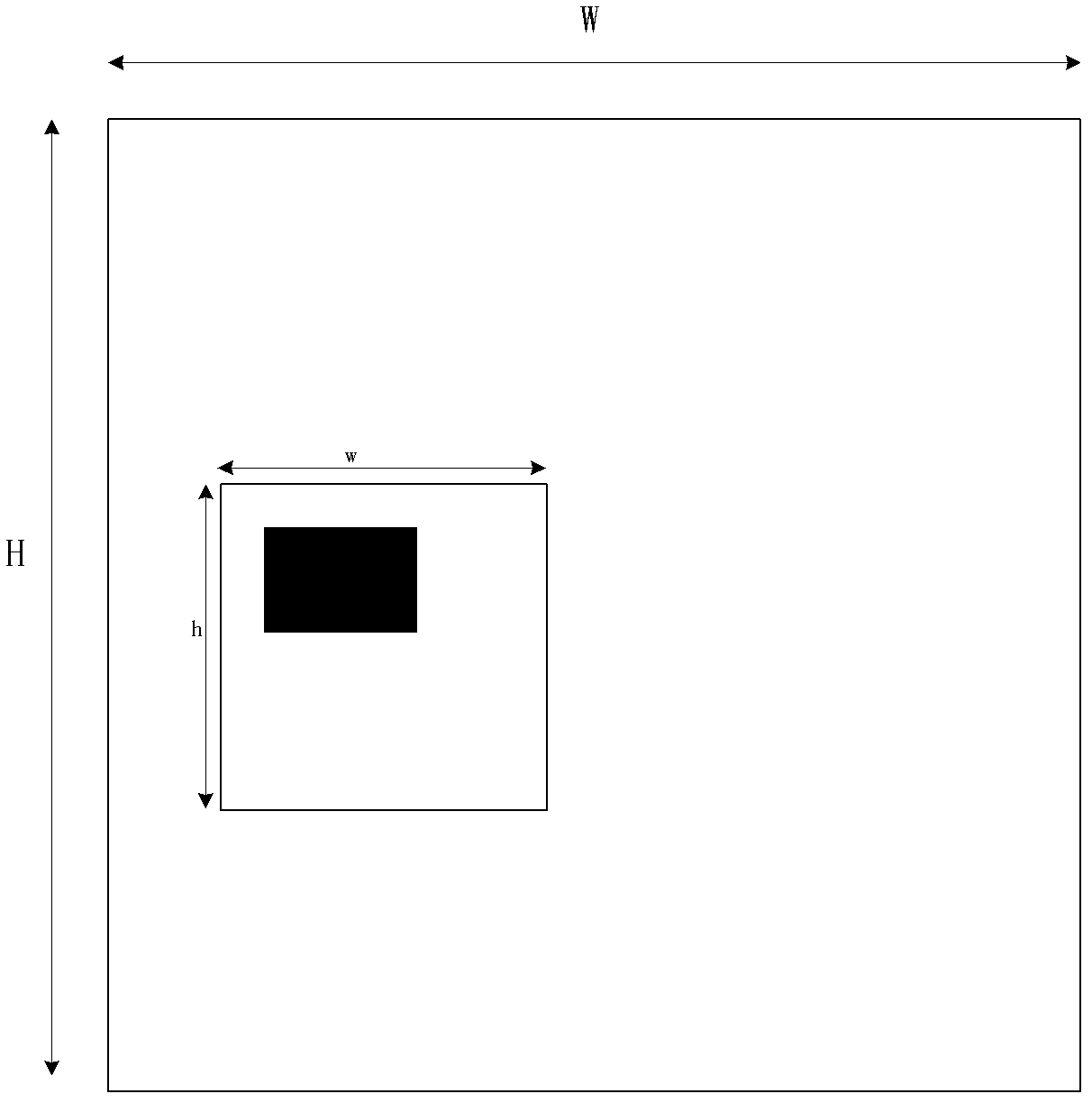Method for detecting human body parts by performing parallel statistical learning based on three-dimensional depth image information
A technology of human body parts and depth images, which is applied to computer parts, calculations, instruments, etc., to achieve the effect of improving the detection rate and superior detection effect
- Summary
- Abstract
- Description
- Claims
- Application Information
AI Technical Summary
Problems solved by technology
Method used
Image
Examples
Embodiment Construction
[0032] In order to make the objectives, technical solutions, and advantages of the present invention clearer, the following further describes the present invention in detail with reference to specific embodiments and drawings.
[0033] The invention is based on the target detection principle of statistical learning, and performs target detection and tracking on the acquired three-dimensional depth image. Such as figure 1 As shown, the human body part detection method based on three-dimensional depth images proposed by the present invention includes the following steps:
[0034] Step 1. Use a depth camera to collect multiple 3D depth images and process them to establish a human body part sample database.
[0035] In the detection method based on statistical learning, in addition to the performance of the learning algorithm and the feature form have a greater impact on the performance of the detector, the training set is also a key factor. If the training set is selected improperly, th...
PUM
 Login to View More
Login to View More Abstract
Description
Claims
Application Information
 Login to View More
Login to View More - R&D
- Intellectual Property
- Life Sciences
- Materials
- Tech Scout
- Unparalleled Data Quality
- Higher Quality Content
- 60% Fewer Hallucinations
Browse by: Latest US Patents, China's latest patents, Technical Efficacy Thesaurus, Application Domain, Technology Topic, Popular Technical Reports.
© 2025 PatSnap. All rights reserved.Legal|Privacy policy|Modern Slavery Act Transparency Statement|Sitemap|About US| Contact US: help@patsnap.com



